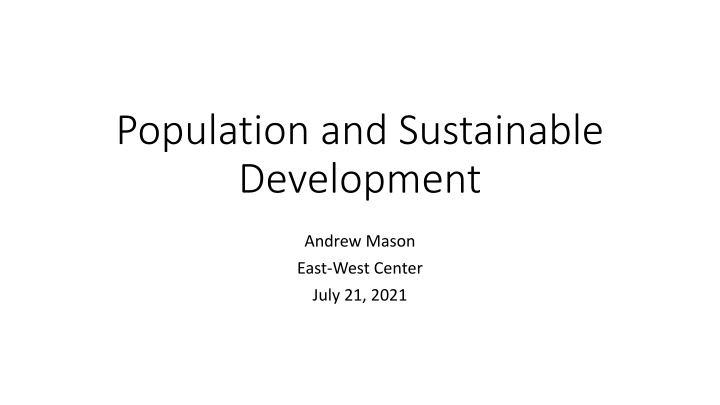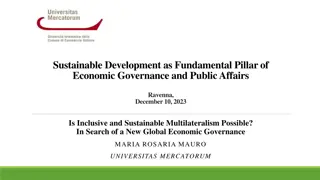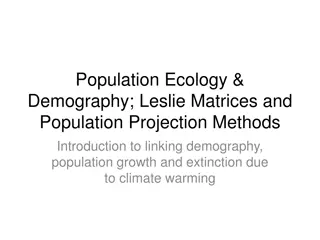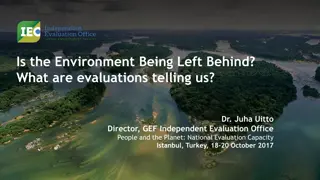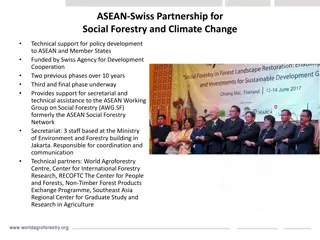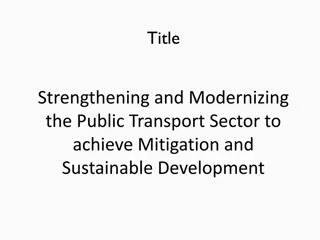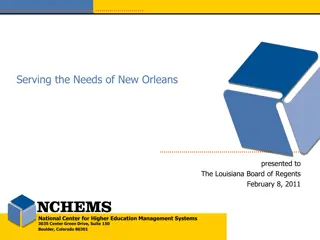Population and Sustainable Development: A Comprehensive Overview
Explore the vital link between population dynamics and sustainable development through insights on life expectancy gains, GDP growth drivers, demographic dividends, and policy implications. Delve into how effective labor influences GDP growth, the changing role of population in the global economy, and more. Discover the intricate balance needed for long-term prosperity amid demographic shifts and aging populations.
Download Presentation

Please find below an Image/Link to download the presentation.
The content on the website is provided AS IS for your information and personal use only. It may not be sold, licensed, or shared on other websites without obtaining consent from the author.If you encounter any issues during the download, it is possible that the publisher has removed the file from their server.
You are allowed to download the files provided on this website for personal or commercial use, subject to the condition that they are used lawfully. All files are the property of their respective owners.
The content on the website is provided AS IS for your information and personal use only. It may not be sold, licensed, or shared on other websites without obtaining consent from the author.
E N D
Presentation Transcript
Population and Sustainable Development Andrew Mason East-West Center July 21, 2021
Acknowledgements UN Population Division Most authoritative source of information on population estimates and projections Collaboration in the development of National Transfer Accounts. UN Population Fund Support for construction and use of National Transfer Accounts by regional offices. Support in the application of NTA Research teams from over 70 countries who are members of the NTA Network National Institute on Aging, Hewlett Foundation, International Development Research Centre, European Commission, World Bank, Asian Development Bank, Rockefeller Foundation, and governments and institutions that have supported regional and country-specific work. 7/21/2021 Andrew Mason 2
Population and sustainable development Highlights Four ways population influences sustainable development Gains in life expectancy Population-driven GDP growth Transformation of reproduction and human capital investment Demographic dividends Policy in an aging world 7/21/2021 Andrew Mason 3
Gains in life expectancy Life expectancy at birth India 1900 24.0 1950 37.9 2000 62.5 2020 69.9 Japan 44.0 62.2 81.8 84.8 US 47.0 68.6 77.2 78.9 Source: Maddison (2000) and United Nations (2011, 2019) Notes: 2020 values projected. 7/21/2021 Andrew Mason 4
Population as a driver of GDP growth Given labor productivity (GDP per effective worker), GDP growth is driven by growth in the number of effective workers. Effective workers uses National Transfer Accounts data for 185 countries to incorporate age-specific variation in labor force participation, unemployment, hours worked, and wages. Until recently, effective labor grew in countries with both high and low labor productivity contributing to record growth in GDP. Now, effective labor is growing in countries with relatively low labor productivity, but declining in countries with high labor productivity. Hence, the contribution of population to GDP growth will be very small in coming decades. 7/21/2021 Andrew Mason 5
Population as a driver of global GDP Major role in 1975-2000 to minor role in 2020-60 Weighted effective labor is effective labor weighted for country differences in GDP/L in the base year. Productivity growth is growth of GDP per effective worker. Based on NTA estimates of labor income and UN estimates and projections of population for 185 countries. Source: Mason et al (2021) Components of Global GDP growth 5.00% 4.50% 4.00% 3.50% 3.00% 2.50% 2.00% 1.50% 1.00% 0.50% 0.00% 1950-75 1975-00 2000-20 2020-60 Weighted effective labor Productivity growth 7/21/2021 Andrew Mason 6
Transformed reproduction and human capital investment Increased opportunities for women as they redirect their time to: Education Production of market goods and services Time-intensive childrearing Small families are investing more per child in human capital Health Education Both public and private 7/21/2021 Andrew Mason 7
Greater investment in human capital per child Human capital spending is a synthetic cohort value calculated as the sum of public and private education spending, ages 3 to 26, and public and private health spending 0 to 17 expressed as a percentage of annual pre-tax labor income of persons 30-49. Higher productivity and income for children Ability to maintain support for older generations as population aging occurs. Source: Lee and Mason 2010 updated. 7/21/2021 Andrew Mason 8
Demographic dividends: Impact of changing population on growth in standards of living. First dividend Definition: Growth in the effective number of workers relative to effective number of consumers. Measurement: Age profiles of consumption and labor income combined with population data to incorporate the effects of policies and practice that vary from country to country. Second dividend Definition: Growth in consumption per effective worker due to population change. Capital deepening, human capital investment, etc. Not explored here. 7/21/2021 Andrew Mason 9
First demographic dividend has contributed to higher standards of living around the world Largest gain realized in Eastern Asia and Latin America and the Caribbean. Gains have been delayed and relatively small in sub-Saharan Africa. 7/21/2021 Andrew Mason 10
For the next 50 years, the contribution of the first dividend will be very mixed First dividend has turned negative in the West and in Eastern Asia. It will turn negative in Latin America and the Caribbean beginning in 2030. First dividend will be positive in Southern Asia until 2050 and for the foreseeable future in sub- Saharan Africa. First dividend is playing a convergent role as the support ratio declines in rich countries and increases in poor countries. 7/21/2021 Andrew Mason 11
Policy in an Aging World Strategies for increasing resources Quantity of labor (delayed retirement; gender equity) Greater investment in human capital Improvements in capital and labor markets Cost-reducing innovation (health care) Reform of reallocation systems Transfer systems Asset-based systems 7/21/2021 Andrew Mason 12
Steady-state transfer system Old-age needs are often met through intergenerational transfers public programs in particular. With aging, per capita transfer outflows (taxes) much rise and/or public transfer inflows (pension and health care benefits) must fall. Existing transfer systems are not sustainable. In the US, people would have to reduce their consumption by about 30 percent at all ages to achieve sustainable transfer systems. Lower fertility and slower population growth would have even larger effects. Transfer-based funding in steady state 120 Consumption as a percent of baseline 100 80 60 40 20 0 2 1 0 -1 Rate of population growth Note: Current US mortality and age profiles of consumption and labor income, Mason 2021 forthcoming. 7/21/2021 Andrew Mason 13
Steady-state asset-based system If people are living longer and relying on an asset-based reallocation system, they must work more and/or consume less to fund greater old-age needs. Changes in age structure that arise due to fertility decline do not affect lifecycle budgeting at the individual level, except for the possible effects of reduced childrearing costs. Population aging could affect rates of return to capital leading to lower interest rates. If so, aging will require higher saving and lower consumption. Asset-based funding in steady state 120 Consumption as a percent of baseline 100 80 60 40 20 0 7 5 3 Interest rate Note: Current US mortality and age profiles of consumption and labor income, Mason 2021 forthcoming. 7/21/2021 Andrew Mason 14
Concluding observations Population changes have complex implications for sustainable development. Longer life and modern reproduction contribute in a very positive way. Population aging will require restructuring of economic systems to achieve sustainable development. 7/21/2021 Andrew Mason 15
Sources: Lee R & Mason A (2010) Fertility, Human Capital, and Economic Growth over the Demographic Transition. European Journal of Population 26(2):159-182. Lee, R. and A. Mason, principal authors and editors. 2011. Population Aging and the Generational Economy: A Global Perspective. Cheltenham, UK: Edward Elgar. Andrew Mason, 2021 forthcoming, National Transfer Accounts and the Economics of Aging, Bloom et al., Handbook on the Economics of Aging. United Nations Population Division. 2013. National Transfer Accounts Manual: Measuring and Analysing the Generational Economy. New York: United Nations. . 2019. World Population Prospects: The 2019 Revision. New York: United Nations. 7/21/2021 Andrew Mason 16
